For our 2nd day, we first went to a UNESCO World Heritage site: The Tō-ji Temple (Kyo-o-gokuji Temple).
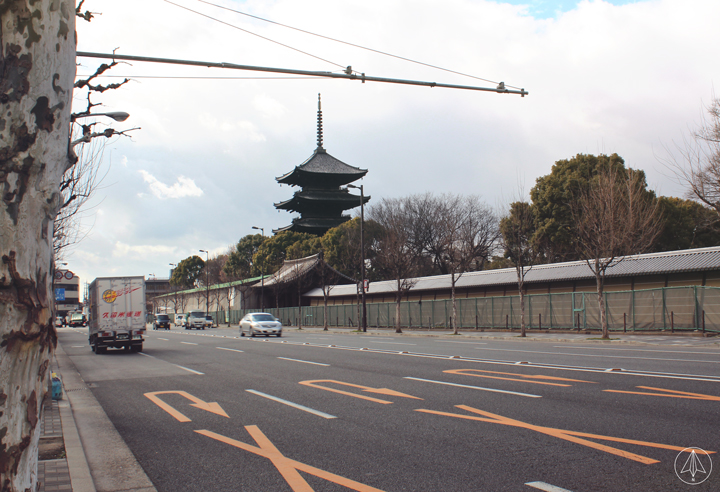
To-ji, means “East Temple”. It is one of the oldest temples in Kyoto and is the only surviving guardian temple and before it was with Sai-Ji, means “West Temple” which was destroyed by fire in 1233. It was constructed to stood on the East side of the Rashomon Gate which guards the main southern entrance of Kyoto.
General Admission: ¥ 500 for adults. Price may vary and depends on the season.
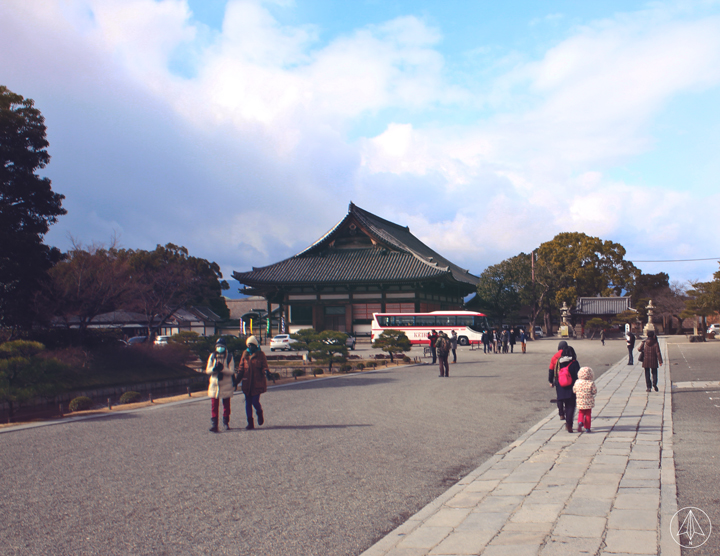
Entrance going to To-ji Temple
The Toji Pagoda
The Toji Pagoda is well known for being Japan’s tallest wooden pagoda with a height of 57 meters. Given Japan’s seismic instability, this pagoda is earthquake proof! Japanese builders used three design techniques: Wide and heavy eaves that act as the stabilizers from the movement, disconnected floors to allow loose movement during shakes, and shinbashira—a massive central pillar of the pagoda that can absorb shakes and shocks. A lightning rod was also added on top of the pagoda since fire-by-lightning-strikes are one of the main reasons of wooden pagodas are destroyed.


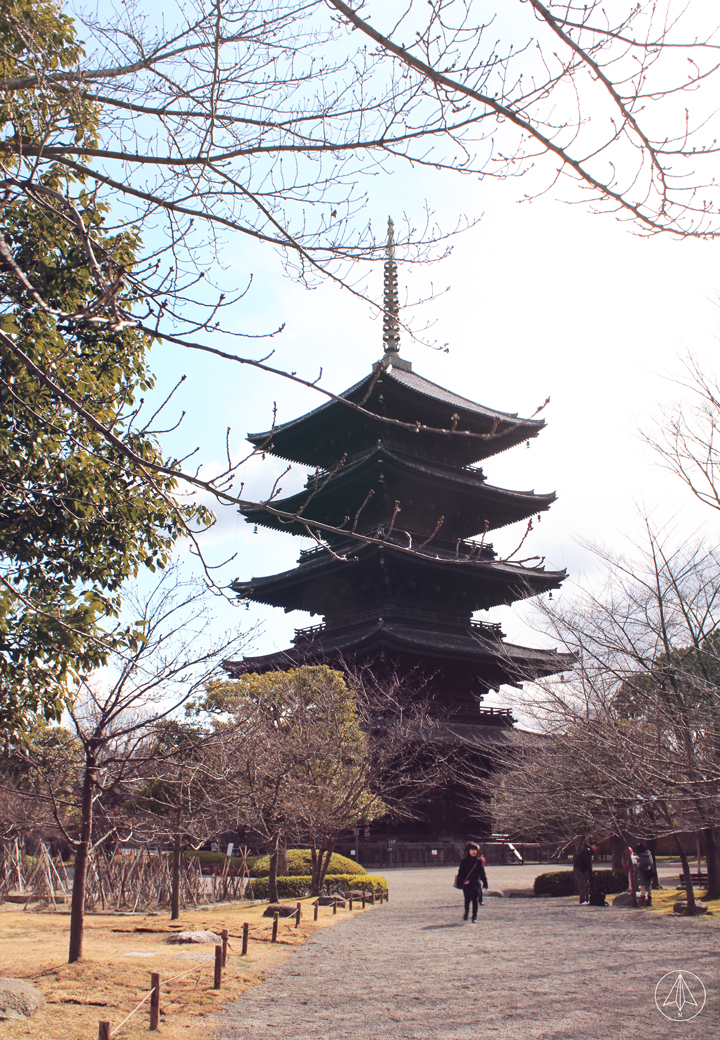
Kondo and Kodo
Kyo-o-gokuji Kondo is a large temple hall that houses a Buddha statue and some Bodhisattva sculptures. Unfortunately, photos are not allowed inside. Built in 796, the kondo was one of Japan’s national treasures.

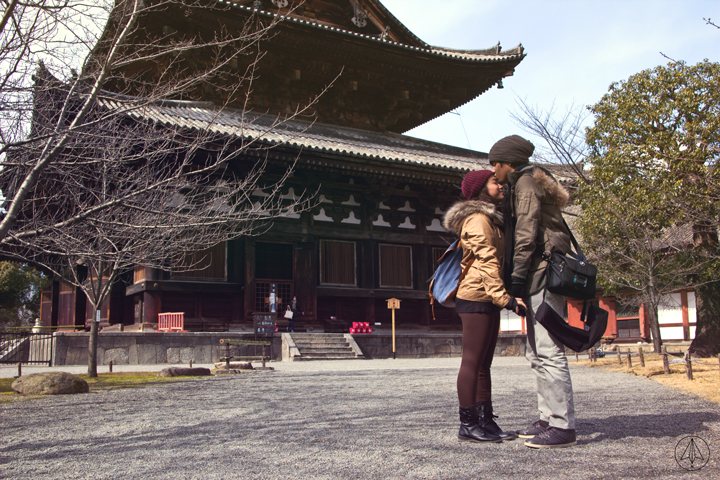
Another cheesy photo

Kodo is another building that was a place for lectures and public discourse. Kodo in To-ji is Japan’s most important cultural property as it contains the many national treasures.
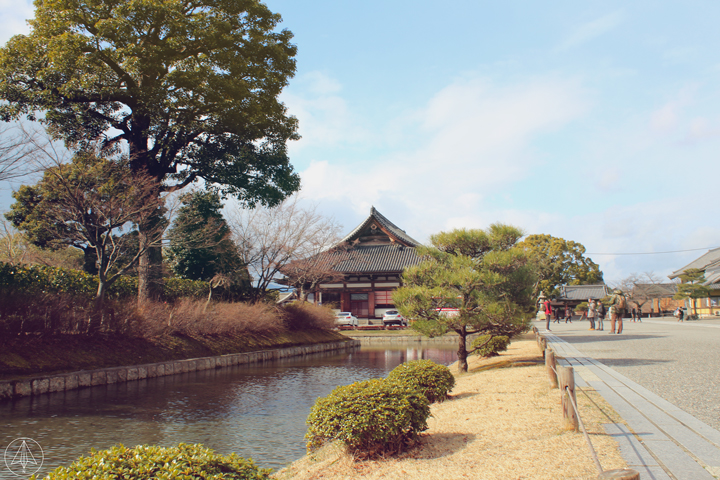

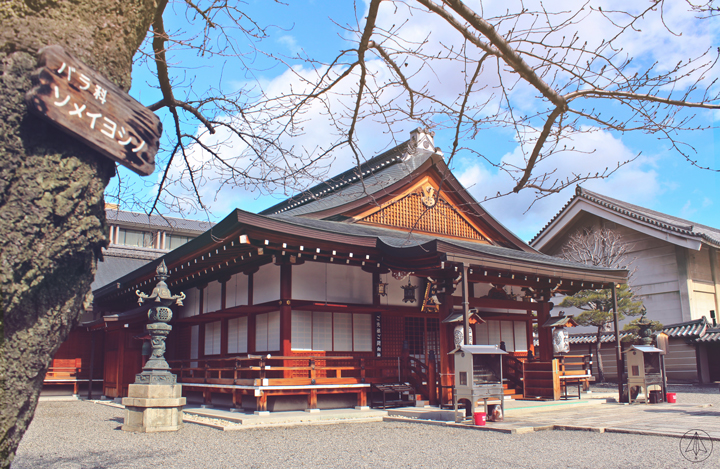
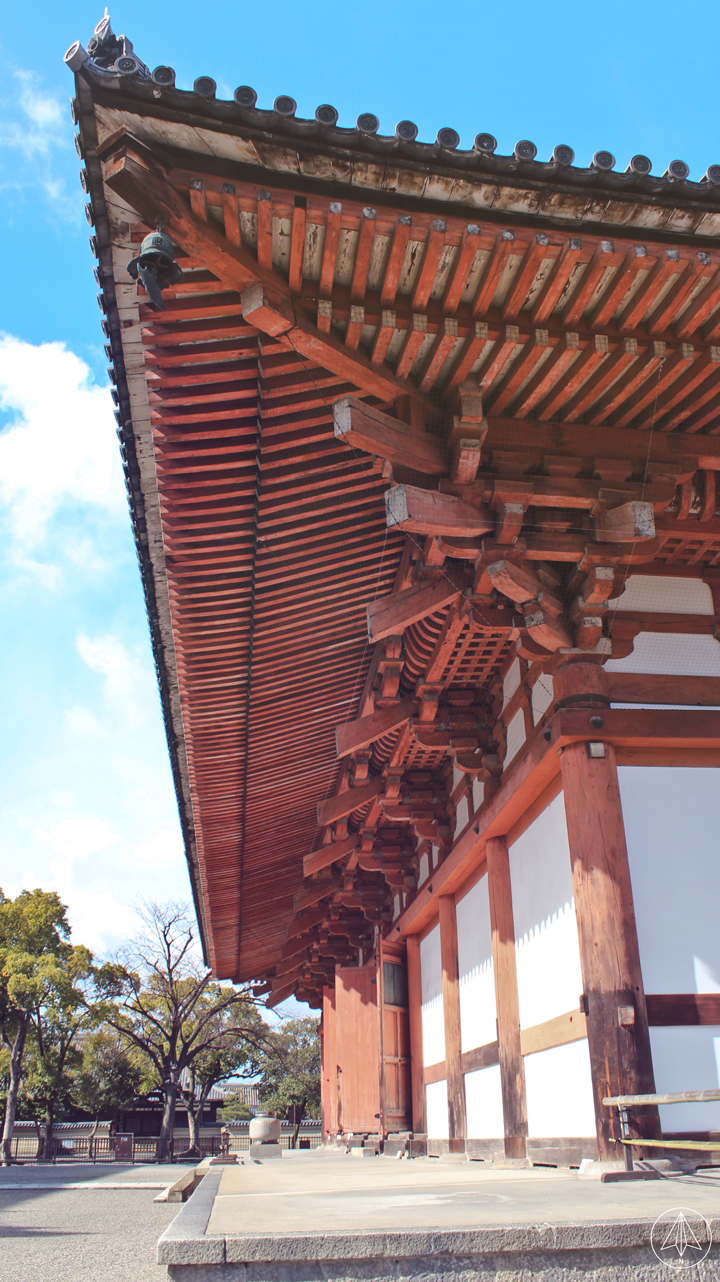
Purification Fountain
When visiting a temple or shrine in Japan, you will notice that there are fountains at the entrance. Traditionally, you have to take a ladle, fill it up with fresh water and wash both your hands. You also need to wash your mouth and spit the water beside the fountain. Note that you cannot directly transfer the water from the ladle to your mouth and you can not drink the water as well.


Flea markets are held every 21st of the month. Sadly, we did not experience it because of the timing but it didn’t make our trip to the To-ji less special because it made us appreciate the beauty of place without tents and crowd!


After our trip in To-ji Temple, we passed by at the Kawaramachi market street before heading to Higashiyama District.
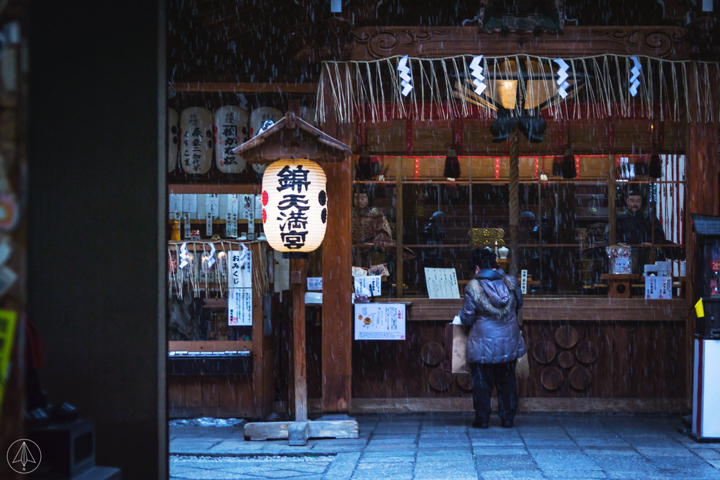
Snooooow!

Lanterns at Nishiki Tenmangu Shrine located in Kawaramachi area of downtown Kyoto, Japan.
Higashiyama District
Higashiyama is known as a well-preserved historic district in Eastern Kyoto. A walk between the Kiyomizudera and Yasaka Shrine is a way to experience the old capital city where you will find traditional wooden houses, merchant shops and paved floors.
Kiyomizudera Temple
Arriving at Kiyomizudera Temple, we were greeted by a colorful Vermilion Gate of the Deva Kings.
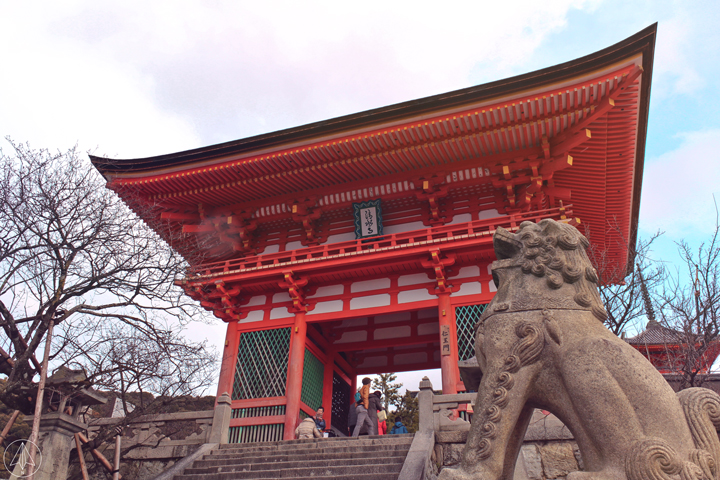

The main hall was under repair maintenance that time so I only had few photos of the place.
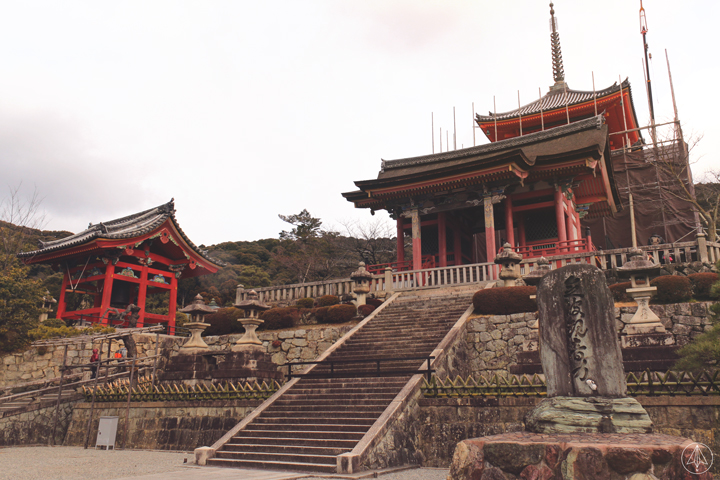




Kiyomizudera Temple is an independent Buddhist temple and also listed as a UNESCO World Heritage Site. With Japanese construction techniques, not a single nail was used in this structure.
One of the tradition during the Edo period is the 13 meter high jump from the Kiyomizudera veranda; if you survived, your wish will be granted. Presently, this practice is no longer allowed. It would not be fun seeing tourist jumping off ! Yikes!

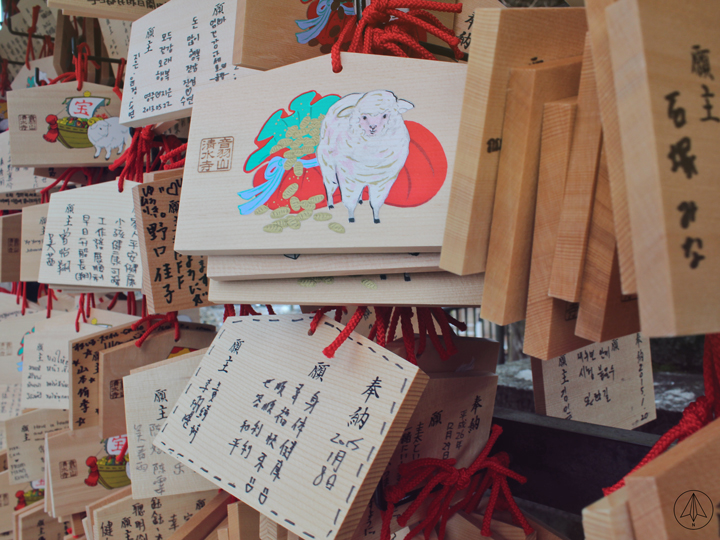
Ema are wooden wishing plaques that can be purchased at Japanese shrines for you to write your wishes and hang it up. (This is a way better option that jumping off the cliff. Haha! )


Eave details – Duo Gong bracket system

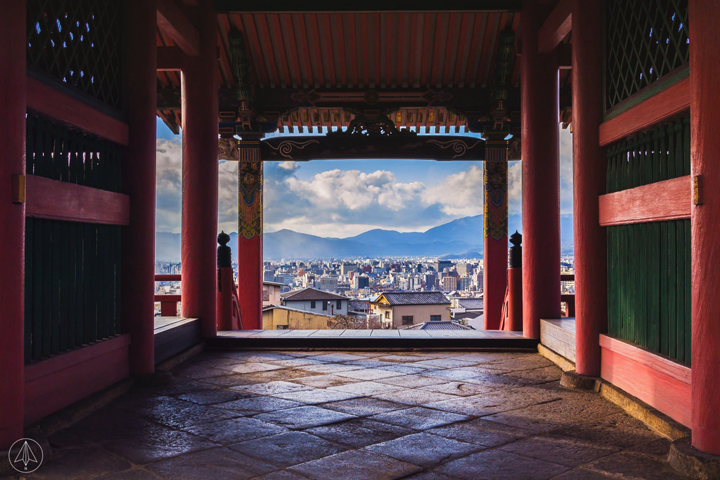
View from the gate of Kiyomizudera Temple
Higashiyama Street
Existing the Kiyomizudera Temple, we walked through the historical street of Higashiyama.




Yasaka Pagoda
The Yasaka Pagoda which was a part of Hokanji temple, is a very visible and recognizable landmark in the Higashiyama. It is the only structure left after the temple was destroyed by fires and earthquake over the years.

Yasaka Shrine
Capped our trip at the Yasaka Shrine. Yasaka shrine (once called Gion Shrine) hosts the Gion Matsuri, the biggest festival in Kyoto celebrated in July. It also attracts millions of worshipers of Hatsu-mode during new year, where worshippers seek to take home a sacred flame from the shrine to cook the first meal for the year known as Okera Mairi.
During our visit there, it was unfortunate that the main hall was also under maintenance repairs and we were not able to see it. The dance hall was open though.
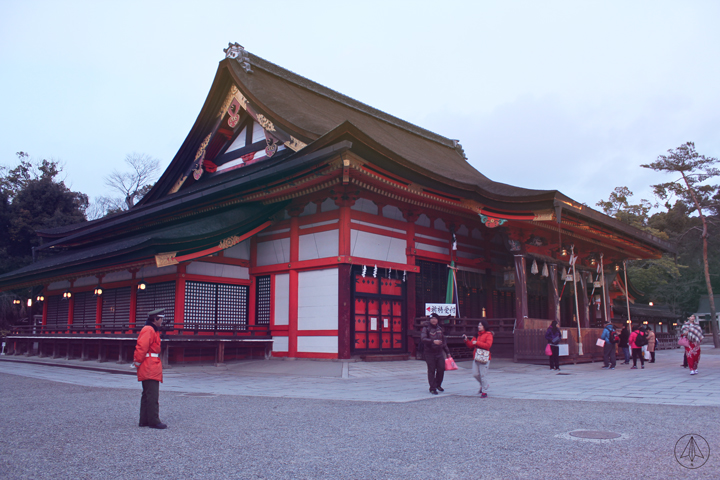


The shrine’s Nishi-romon gate at night
Time to go back to the apartment.

Photos taken: February 2015
PREVIOUS: OSAKA, JAPAN: DAY 1 – February 12, 2015
NEXT: OSAKA, JAPAN: DAY 3 – February 13, 2015
by:
